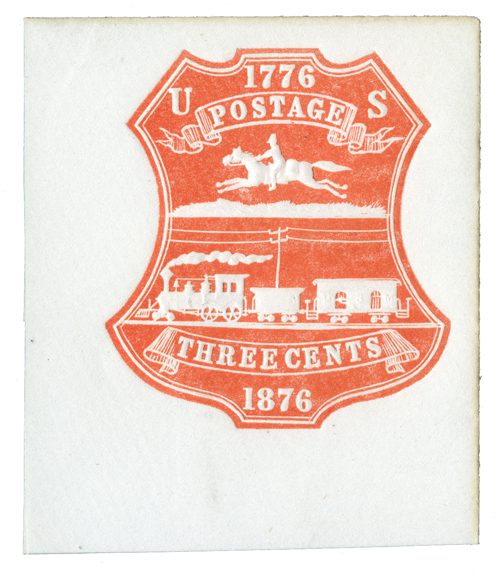On August 31, 1852, the U.S. passed the Postal Act 1852, which required private express companies to use envelopes created by the Post Office.
Prior to the mid-1800s, few letters were sent in envelopes because postage was usually based on the number of sheets of paper and the distance traveled. So an envelope would have counted as another sheet and increased the price.
The use of envelopes increased after 1845 when postage was based on weight and distance alone and the number of sheets was no longer considered. However, around this time, private express companies also grew in popularity. The Post Office wanted a way to gain revenue from that mail, so they pushed for the Postal Act of August 31, 1852. This act allowed for letters to be “sent, conveyed and delivered otherwise than by post or mail,” as long as the postage was paid by the use of stamped envelopes.
The act also stated that the envelopes “shall be duly sealed, or otherwise firmly and securely closed, so that such letter cannot be taken therefrom without tearing or destroying such envelope.” This was included to make sure that envelopes couldn’t be reused.
Private mail companies obliged and bought the envelopes and then had their own frank printed on them to be resold to their customers. The most well known of these are covers from Wells Fargo & Co.
The first envelopes produced for this purpose were issued on July 1, 1853. The stamp printed on the envelope was based on the British Victoria envelope, with a bust in an oval and the denomination below it. To combat counterfeits, these envelopes were printed on watermarked paper and the stamps were embossed.
Much like U.S. stamps, most early stamped envelopes pictured the busts of famous leaders. The first commemorative stamp envelope came in 1876 to mark the American Centennial. Though it would be about a century before the USPS began issuing commemorative stamped covers on a regular basis.
Click here to see what else happened on This Day in History.
[raw][yasr_visitor_votes size=”large”][/raw]





Very informative
It costs the same when sent to same town or across the country. The distance don’t matter now. When was this established?
I collected several hundred envelops over the years, but stopped as I grew out of space to save stamps, envelops, aerograms etc.
I love to look and hold postage stamps and stationery, and learn history.
Thank you for that interesting and little known fact.
I remember buying and using those envelopes before and I like buying stamps to mail things to
people so they can save the canceled stamps also. thanks for always showing the stamps and
stories behind them. Also the Marilyn Monroe stamsp were the biggest hit in Japan and another
country. My husband would take them when he use to go for business and gave them as gifts.
Thank you, Mystic. I love postal history. I have hundreds of interesting items from stampless mail up to contemporary pieces from the US and abroad. I might add that besides the features apparent on covers and post cards, you often find correspondence that provides a window onto the daily events people have experienced in business and home life.
Aside from the single stamps that I have, I also have many stamps on envelopes. The vast majority are personal correspondences between my
parents and relatives/friends. I also have some that I purchased, involving personal correspondences, as well as those that were given to me by one of my father’s co-worker. A few have the letter in the envelope.
Thanks for this postal history note and to those who gave their comments!
I have been interested in stamp collecting since I was 10 years old and it stills
fascinates me.